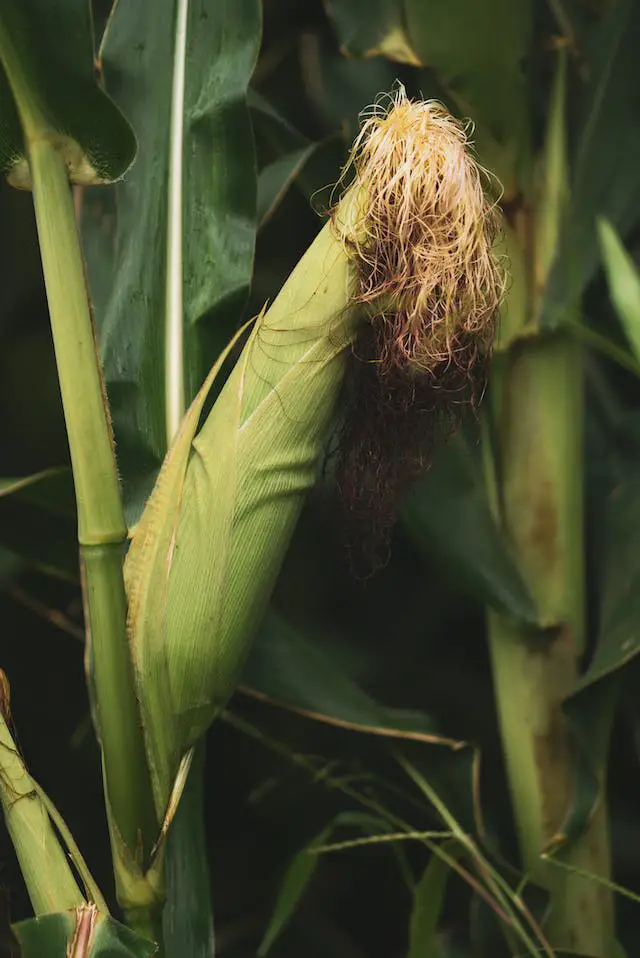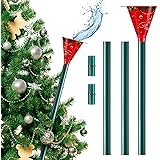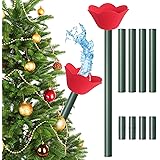Looking to expand your green thumb repertoire? Wondering how to propagate corn plant? You’ve come to the right place! In this article, we’ll guide you through the process of propagating corn plants, allowing you to effortlessly grow more of these stunning additions to your indoor garden.
From selecting the right cutting to providing the optimal conditions for growth, we’ll provide you with all the tips and tricks you need to successfully propagate corn plant. So, let’s dive in and explore the wonderful world of corn plant propagation together!
How to Propagate Corn Plant: A Comprehensive Guide
Propagating a corn plant (Dracaena fragrans) is a rewarding and cost-effective way to expand your indoor plant collection. This popular houseplant, also known as the cornstalk dracaena or corn plant, features tall, corn-like leaves and can thrive in a variety of indoor environments.
Whether you’re a seasoned plant enthusiast or a beginner looking to try your hand at propagation, this guide will walk you through the step-by-step process of propagating corn plants successfully.
1. Understanding Corn Plant Propagation
Before delving into the propagation process, it’s essential to understand how corn plants naturally reproduce.
Corn plants primarily propagate through stem cuttings, allowing you to create new plants by rooting sections of the parent plant’s stem.
1.1 Selecting the Parent Plant
When choosing a parent plant for propagation, look for a healthy and mature corn plant that exhibits robust growth.
Select a plant with a strong stem and vibrant green leaves, as these characteristics indicate a higher chance of successful propagation.
1.2 Optimal Time for Propagation
The ideal time to propagate corn plants is during the spring or early summer when the plant is experiencing active growth.
This period provides the best conditions for successful rooting and establishment of new plants.
1.3 Tools and Materials Needed
To successfully propagate a corn plant, gather the following materials:
- Sharp, sterilized pruning shears or a clean knife
- A suitable rooting medium, such as a well-draining potting mix or a mix of perlite and peat moss
- Clean containers or pots for rooting the stem cuttings
- A clear plastic bag or a plastic propagation dome to create a humid environment
- Rooting hormone (optional)
- A watering can or a spray bottle for misting
Read More: About How To Lower Humidity In A Terrarium
2. Step-by-Step Guide to Propagating Corn Plant
Now that you have the necessary knowledge and materials in hand, let’s dive into the step-by-step process of propagating corn plants:
2.1 Preparing the Stem Cuttings
To begin, follow these steps to prepare the stem cuttings for propagation:
- Using sharp pruning shears or a clean knife, select a healthy stem from the parent plant, ideally one that is at least 6 inches long.
- Make a clean, angled cut just below a leaf node (the area where the leaf meets the stem). Angle the cut to increase the exposed surface area for root formation.
- Remove any lower leaves from the stem, leaving only a few leaves at the top.
- If desired, dip the cut end of the stem into rooting hormone powder to encourage quicker rooting.
2.2 Rooting the Stem Cuttings
Once the stem cuttings are prepared, it’s time to root them and create an environment conducive to successful propagation:
- Fill a clean container or pot with a suitable rooting medium, ensuring it is moist but not waterlogged.
- Make a planting hole in the rooting medium using a pencil or your finger.
- Place the prepared stem cutting into the hole, ensuring that at least one leaf node is buried in the medium.
- Gently firm the rooting medium around the stem to hold it in place.
- If propagating multiple stem cuttings, ensure that they are adequately spaced to allow airflow.
- Water the rooting medium thoroughly, allowing any excess water to drain away.
- Cover the container with a clear plastic bag or a plastic propagation dome to create a humid environment.
- Place the container in a warm, well-lit location away from direct sunlight.
- Mist the leaves and inside the plastic cover regularly to maintain moisture levels without waterlogging the rooting medium.
- Check for root development regularly by gently tugging on the stem cuttings. Once resistance is felt, roots have likely formed successfully.
2.3 Transplanting the Rooted Cuttings
After the stem cuttings have developed roots, it’s time to transition them to their new pots or containers:
- Prepare a suitable pot or container with a well-draining potting mix.
- Carefully remove the rooted stem cuttings from the rooting medium, ensuring not to damage the delicate roots.
- Plant each cutting in its own pot, burying the roots in the potting mix and gently firming it around the stem.
- Water the newly potted corn plants thoroughly, allowing any excess water to drain away.
- Place the pots in a well-lit location, avoiding direct sunlight initially to prevent leaf burn.
- Monitor the plants closely for any signs of stress or dehydration, adjusting the watering frequency as necessary.
3. Caring for Newly Propagated Corn Plants
Once the corn plants are successfully propagated and transplanted, it’s crucial to provide them with proper care and attention for healthy growth:
3.1 Light Requirements
Corn plants thrive in bright, indirect light conditions. Place them in a well-lit area away from direct sunlight, which can scorch and damage their leaves. A north or east-facing window typically provides suitable light levels for optimal growth.
3.2 Temperature and Humidity
Maintain a temperature range of 60-75°F (15-24°C) for corn plants, as they prefer warm environments. Additionally, these plants appreciate higher humidity levels, so consider using a humidifier or placing the pots on trays filled with water and pebbles to increase humidity around them.
3.3 Watering and Feeding
Keep the soil consistently moist but avoid overwatering, as corn plants are susceptible to root rot. Allow the top inch of soil to dry out slightly between waterings, and ensure proper drainage to prevent waterlogged conditions. During the growing season, fertilize the plants monthly using a balanced, water-soluble houseplant fertilizer, following the package instructions.
3.4 Pruning and Maintenance
Regularly remove any dead or yellowing leaves to maintain the plant’s appearance and prevent disease. Additionally, prune the corn plant to shape it and encourage bushier growth. The best time to prune is during the spring or early summer when the plant is actively growing.
4. Troubleshooting Common Issues
As you care for your propagated corn plants, you may encounter some common issues. Here are a few troubleshooting tips:
4.1 Root Rot
Overwatering or poor drainage can lead to root rot in corn plants. Ensure proper drainage and allow the soil to dry out slightly between waterings to prevent this issue.
4.2 Yellowing Leaves
Yellowing leaves may indicate either overwatering or underwatering. Adjust your watering schedule accordingly, allowing the top inch of soil to dry out slightly before watering again. Consider the humidity levels as well, as low humidity can also cause leaf yellowing.
4.3 Pest Infestations
Corn plants may attract common houseplant pests like spider mites, mealybugs, or scale insects. Regularly inspect the plants for signs of pests and treat them with appropriate insecticidal soaps or horticultural oils if necessary.
4.4 Stunted Growth
If your propagated corn plant exhibits stunted growth, reassess the lighting conditions. Insufficient light can impede growth, so consider moving the plant to a brighter location.
Now that you have a comprehensive understanding of how to propagate corn plants, you can embark on this rewarding journey of expanding your indoor garden.
By following the step-by-step guide and providing proper care, you’ll soon have a thriving collection of corn plants to enjoy their majestic beauty in your home or office.
Read More: About How To Make A Terrarium With Air Plants
Frequently Asked Questions (FAQs)
To propagate a corn plant, you can use stem cuttings. Cut a healthy stem just below a leaf node and remove the lower leaves. Place the cutting in a glass of water and keep it in indirect sunlight until roots form. Once roots have developed, transfer the cutting to a pot with well-draining soil.
The best time to propagate a corn plant is in spring or early summer when the plant is actively growing. This ensures that the cutting has sufficient energy to develop roots and establish itself.
Water the propagated corn plant regularly, but avoid overwatering. Allow the top inch of soil to dry out between waterings. Check the moisture level by inserting your finger into the soil. If it feels dry, it’s time to water.
Yes, you can propagate a corn plant from seeds. However, keep in mind that corn plants grown from seeds may not retain the exact characteristics of the parent plant. Sow the seeds in a well-draining soil mix and provide them with proper moisture and sunlight.
It usually takes around 2-4 weeks for a corn plant cutting to develop roots when propagated in water. However, keep in mind that individual plants may vary, and the rooting time can depend on factors like temperature, humidity, and overall plant health.
While not necessary, using rooting hormone can help expedite root development when propagating a corn plant. It can enhance the chances of successful propagation by providing essential hormones that stimulate root growth. Follow the instructions on the rooting hormone packaging for best results.
After transferring the rooted cutting into a pot, place it in a location with bright, indirect sunlight. Avoid exposing it to direct sunlight as it can scorch the leaves. Water the plant regularly, keeping the soil slightly moist but not waterlogged. Monitor the humidity levels and provide occasional misting if the air is too dry.
Once a corn plant is successfully propagated and rooted, it will focus on establishing its root system before producing new leaves. This process generally takes a few weeks. Once the roots are well-established, new growth will emerge from the top of the stem. Be patient and provide proper care for optimal growth.
Final Thoughts
To propagate a corn plant, start by selecting a healthy mature plant with strong stalks and vibrant leaves. Take stem cuttings that are about 6 inches long, making sure they have at least one leaf node. Remove the lower leaves, dip the cut end in rooting hormone, and plant it in a well-draining potting mix. Keep the soil moist but not waterlogged, placing the cutting in a warm, well-lit area.
With proper care, the cutting will develop roots in a few weeks. Transplant it into a larger pot or garden bed, and continue to provide adequate sunlight, water, and nutrients. By following these steps on how to propagate a corn plant, you can easily expand your corn plant collection.
Auto Amazon Links: No products found.
Perfect Plants Christmas Tree Saver 8oz. | Easy Use Xmas Tree Preserver Food | Have Healthy Green Christmas Trees All Holiday Season
$9.97 (as of December 12, 2025 05:04 GMT +00:00 - More info- Product prices and availability are accurate as of the date/time indicated and are subject to change. Any price and availability information displayed on [relevant Amazon Site(s), as applicable] at the time of purchase will apply to the purchase of this product.
Rocky Mountain Goods Christmas Tree Food - 8 oz Tree Preservative - Reduce Needle Drop - Greener Scent - Fir, Pine, Spruce Trees - Extend Tree Life
$9.95 (as of December 12, 2025 05:04 GMT +00:00 - More info- Product prices and availability are accurate as of the date/time indicated and are subject to change. Any price and availability information displayed on [relevant Amazon Site(s), as applicable] at the time of purchase will apply to the purchase of this product.
VICAMB 39.3 Inch Christmas Tree Watering Funnel,Christmas Tree Watering System Device,Long Tree Watering Funnel Spout for Indoor Outdoor Xmas Tree
$16.99 (as of December 12, 2025 05:04 GMT +00:00 - More info- Product prices and availability are accurate as of the date/time indicated and are subject to change. Any price and availability information displayed on [relevant Amazon Site(s), as applicable] at the time of purchase will apply to the purchase of this product.
FirEver Pure Christmas Tree Food | Preserver Additive & Season Extender for Live Xmas Trees | Keep It Green, Reduce Needle-Drop | Miracle Freshness (8 oz)
$14.99 (as of December 12, 2025 05:04 GMT +00:00 - More info- Product prices and availability are accurate as of the date/time indicated and are subject to change. Any price and availability information displayed on [relevant Amazon Site(s), as applicable] at the time of purchase will apply to the purchase of this product.
EZMeetU Christmas Tree Watering Funnel, 47 Inch Flower Shape Adjustable 6 Section Design, Christmas Tree Watering System, Christmas Tree Waterer, Long Funnel Wide Opening Reusable, Plant Watering Tool
$16.99 (as of December 12, 2025 05:04 GMT +00:00 - More info- Product prices and availability are accurate as of the date/time indicated and are subject to change. Any price and availability information displayed on [relevant Amazon Site(s), as applicable] at the time of purchase will apply to the purchase of this product.
Snow Joe Premium Enviro Blend Ice Melt, Green-Coated Deicer Crystals, 50 lb - Safer Melter for Vegetation, Concrete & Metals w/ Anti-Corrosion Calcium Magnesium Acetate
$32.97 (as of December 11, 2025 19:12 GMT +00:00 - More info- Product prices and availability are accurate as of the date/time indicated and are subject to change. Any price and availability information displayed on [relevant Amazon Site(s), as applicable] at the time of purchase will apply to the purchase of this product.
Muddy Mat® Shown on TV Super Absorbent Microfiber Dog Door Mat for Muddy Paws, Non-Slip Washable Pet Rug, Quick Dry Chenille Entryway Carpet, Machine Washable Indoor Outdoor mat, Grey 30"x19"
$24.95 (as of December 11, 2025 19:12 GMT +00:00 - More info- Product prices and availability are accurate as of the date/time indicated and are subject to change. Any price and availability information displayed on [relevant Amazon Site(s), as applicable] at the time of purchase will apply to the purchase of this product.
ivtivfu Rolling Grill Basket, Removable Wooden Handle, 304 Stainless Steel, Nesting BBQ Tools, Smoker Grilling Accessories for Vegetable, Outdoor Cooking Camping, Birthday Gifts for Men Dad Husband
$25.99 (as of December 11, 2025 19:12 GMT +00:00 - More info- Product prices and availability are accurate as of the date/time indicated and are subject to change. Any price and availability information displayed on [relevant Amazon Site(s), as applicable] at the time of purchase will apply to the purchase of this product.
XXXFLOWER Plant Terrarium with Wooden Stand, Air Planter Bulb Glass Vase Metal Swivel Holder Retro Tabletop for Hydroponics Home Garden Office Decoration - 3 Bulb Vase
$18.98 (as of December 11, 2025 19:12 GMT +00:00 - More info- Product prices and availability are accurate as of the date/time indicated and are subject to change. Any price and availability information displayed on [relevant Amazon Site(s), as applicable] at the time of purchase will apply to the purchase of this product.
Zevo Flying Insect Trap Official Refill Cartridges - Fits Both Zevo Trap & MAX Indoor Fly Trap - Authentic Trap+Lock Technology to Catch Gnats, House & Fruit Flys (4 Official Refill Cartridges)
$14.97 (as of December 11, 2025 19:12 GMT +00:00 - More info- Product prices and availability are accurate as of the date/time indicated and are subject to change. Any price and availability information displayed on [relevant Amazon Site(s), as applicable] at the time of purchase will apply to the purchase of this product.











